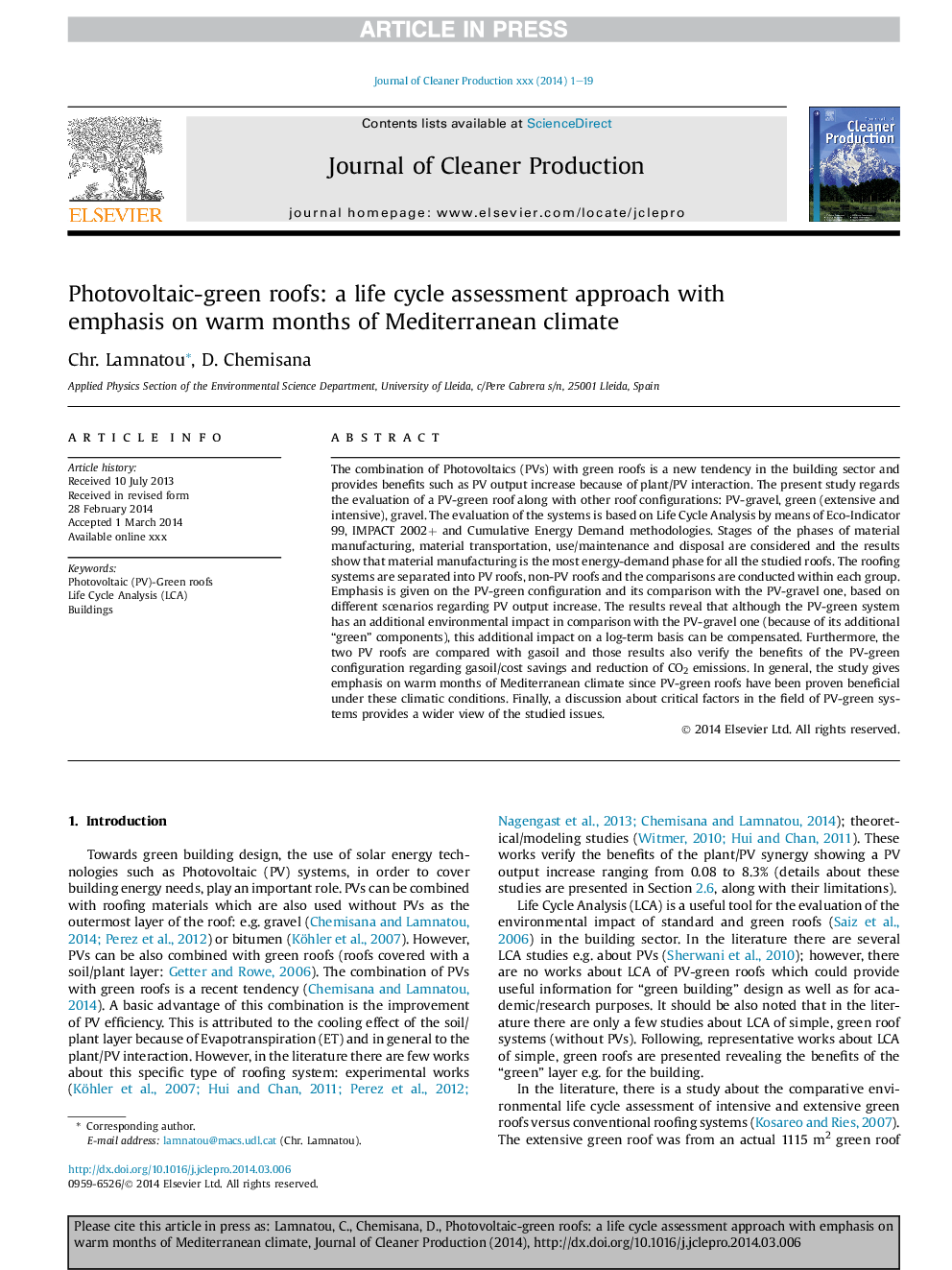| Article ID | Journal | Published Year | Pages | File Type |
|---|---|---|---|---|
| 8106362 | Journal of Cleaner Production | 2014 | 19 Pages |
Abstract
The combination of Photovoltaics (PVs) with green roofs is a new tendency in the building sector and provides benefits such as PV output increase because of plant/PV interaction. The present study regards the evaluation of a PV-green roof along with other roof configurations: PV-gravel, green (extensive and intensive), gravel. The evaluation of the systems is based on Life Cycle Analysis by means of Eco-Indicator 99, IMPACT 2002+ and Cumulative Energy Demand methodologies. Stages of the phases of material manufacturing, material transportation, use/maintenance and disposal are considered and the results show that material manufacturing is the most energy-demand phase for all the studied roofs. The roofing systems are separated into PV roofs, non-PV roofs and the comparisons are conducted within each group. Emphasis is given on the PV-green configuration and its comparison with the PV-gravel one, based on different scenarios regarding PV output increase. The results reveal that although the PV-green system has an additional environmental impact in comparison with the PV-gravel one (because of its additional “green” components), this additional impact on a log-term basis can be compensated. Furthermore, the two PV roofs are compared with gasoil and those results also verify the benefits of the PV-green configuration regarding gasoil/cost savings and reduction of CO2 emissions. In general, the study gives emphasis on warm months of Mediterranean climate since PV-green roofs have been proven beneficial under these climatic conditions. Finally, a discussion about critical factors in the field of PV-green systems provides a wider view of the studied issues.
Keywords
Related Topics
Physical Sciences and Engineering
Energy
Renewable Energy, Sustainability and the Environment
Authors
Chr. Lamnatou, D. Chemisana,
